Life Cycle of Painted Lady Butterfly? Exploring Each Stage!
The painted lady butterfly’s life cycle begins with tiny, green eggs laid on host plant leaves. After 3 to 5 days, larvae hatch and eat the eggshell for nutrients. They then enter a rapid growth phase, undergoing five molts while devouring plant leaves.
Fully grown larvae form chrysalides, shedding their final skin and hardening into a protective casing. Inside the chrysalis, intense metamorphosis occurs as the caterpillar’s tissues reorganize into adult butterfly structures over 7 to 10 days.
Finally, a fully developed butterfly emerges, completing the cycle. To fully grasp each intricate stage, there’s much more to explore.
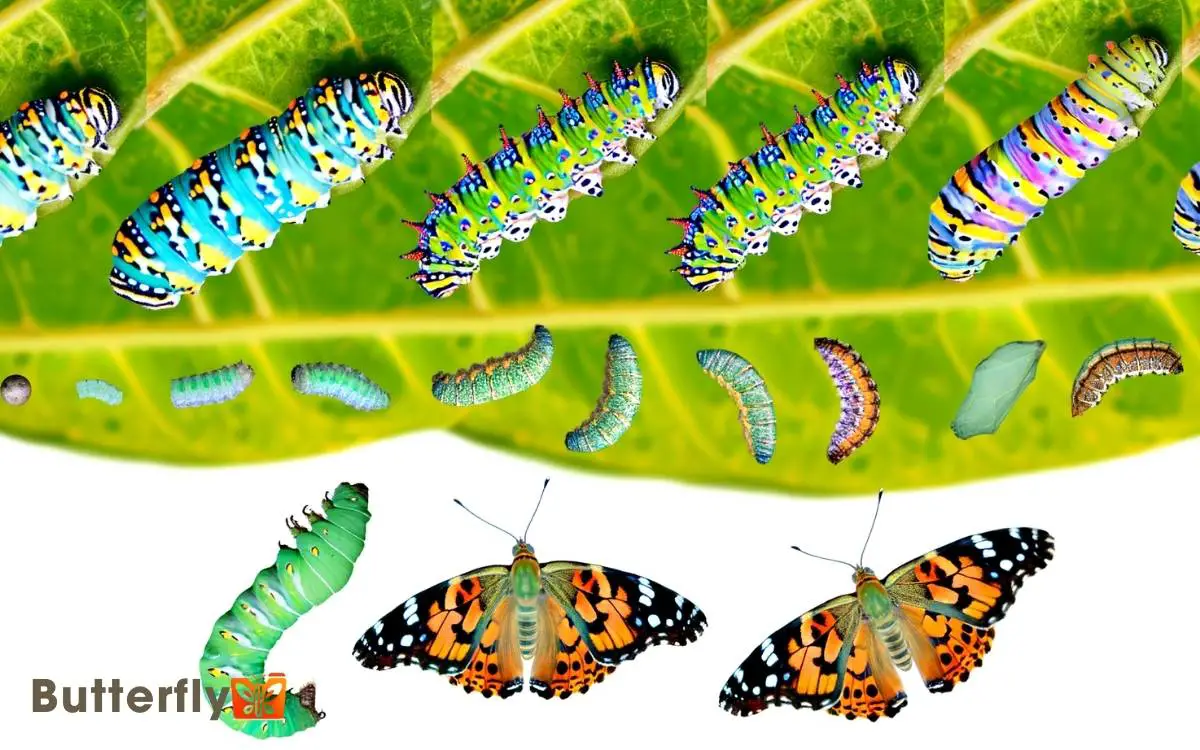
Key Takeaways
Egg Stage
The egg stage of the Painted Lady butterfly begins when the female lays her tiny, green eggs on the underside of host plant leaves.
She carefully selects plants like thistles or hollyhocks, ensuring a suitable environment for her offspring.
Each egg, about 1.2 millimeters in diameter, is ribbed and highly structured, featuring a conical shape that aids in its attachment to the leaf surface. The eggs’ green hue provides camouflage, protecting them from predators.
During this stage, the egg undergoes critical embryonic development, lasting approximately three to five days. Inside, the larva forms, utilizing stored nutrients to fuel its growth.
This period is essential for the successful advancement to the next phase in the butterfly’s life cycle.
Hatching
After a few days, the larva breaks free from the egg, initiating the hatching process essential for its advancement to the larval stage.
This emergence marks a pivotal moment in the Painted Lady butterfly’s life cycle. The larva uses specialized mouthparts to chew through the eggshell, revealing its tiny, segmented body. As it grows, the larva molts several times, shedding its exoskeleton to accommodate its increasing size. During this stage, it actively feeds on host plants, storing energy for its transformation. Educators and students can explore this process visually with a printable Painted Lady butterfly cycle, which illustrates each developmental phase in detail.
Upon hatching, the larva immediately consumes the nutritious eggshell, providing it with essential energy.
Key observations during this stage include:
- Eggshell fragments: Indicating successful hatching.
- Tiny, black-headed larva: The first visible form of the caterpillar.
- Initial silk production: Used to secure the larva to the host plant.
This meticulous process ensures the larva is well-prepared for the subsequent stages of development.
Caterpillar Growth
Entering the caterpillar growth stage, the larva undergoes rapid morphological changes, characterized by multiple molts to accommodate its increasing size.
During this period, the caterpillar’s primary tasks are feeding and growing. It devours host plant leaves voraciously, converting plant material into energy and body mass.
Each molt, known as an instar, marks a significant transformation as the caterpillar sheds its exoskeleton to make room for a larger one.
| Stage | Duration (Days) | Description |
|---|---|---|
| First Instar | 2-3 | Tiny, black with spines |
| Second Instar | 2-3 | Larger, with more distinct markings |
| Third Instar | 2-3 | Noticeable stripes appear |
| Fourth Instar | 2-3 | Increased size, vibrant colors |
| Fifth Instar | 3-5 | Fully grown, preparing for next stage |
The process is both fascinating and essential for the caterpillar’s development.
Chrysalis Formation
Shifting from the final instar, the caterpillar undergoes a profound transformation as it forms its chrysalis, a protective casing essential for its development into an adult butterfly.
This stage begins with the caterpillar securing itself to a stable surface using silk. It then sheds its final larval skin, revealing the chrysalis underneath. The chrysalis hardens, providing a secure environment for the upcoming metamorphosis.
Key features during chrysalis formation include:
- Silk attachment: The caterpillar spins a silk pad to anchor itself.
- Shedding skin: The caterpillar’s last molt reveals the chrysalis.
- Hardening: The outer layer of the chrysalis solidifies, offering protection.
This phase is vital for the caterpillar’s transformation into its adult form.
Metamorphosis
During metamorphosis, the chrysalis becomes the site of intense cellular reorganization, transforming the caterpillar into a fully formed Painted Lady butterfly. Inside, enzymes break down the caterpillar’s tissues into a nutrient-rich soup.
Specialized groups of cells, known as imaginal discs, use these nutrients to develop adult structures like wings, legs, and antennae. The imaginal discs proliferate, differentiate, and integrate into complex systems.
Hormones such as ecdysone and juvenile hormone precisely regulate these changes, ensuring the correct sequence of developmental events. This intricate process requires about 7 to 10 days, depending on environmental conditions.
Butterfly Emergence
Upon emerging from the chrysalis, the Painted Lady Butterfly undergoes a vital wing expansion process. Hemolymph is pumped into the wing veins, causing them to unfurl and harden.
Once the wings are fully expanded and dry, the butterfly initiates its first flight steps, an essential phase for survival and mobility.
Wing Expansion Process
As the painted lady butterfly emerges from its chrysalis, it immediately begins the critical process of expanding its wings through a series of deliberate fluid transfers.
Hemolymph, the insect’s blood-like fluid, is pumped into the wing veins, causing the wings to unfurl and enlarge.
This process, called wing expansion, involves:
- Fluid Infusion: The butterfly pumps hemolymph into its wings.
- Wing Inflation: The wings gradually unfold and stretch to their full size.
- Structural Hardening: The wings dry and harden, readying them for flight.
During this period, the butterfly remains stationary, allowing gravity to assist in the proper alignment and hardening of its wings. Any disturbances can result in malformed wings, impacting its ability to fly and survive.
Initial Flight Steps
Once the wings have hardened, the painted lady butterfly initiates its first flight steps by flexing its wings and testing their mobility and strength. It performs a series of gentle wing flutters to assess proper blood circulation and muscle function.
This pivotal stage allows the butterfly to gauge the capability of its wings, detecting any anomalies that could hinder flight.
Subsequently, the butterfly will take short, low-altitude flights, gradually increasing in distance and height. These early flights are essential for building flight endurance and maneuverability.
The painted lady’s initial flights are typically cautious, as it needs to adapt to aerodynamic forces and environmental conditions, ensuring it can navigate and forage effectively in its habitat.
Adult Butterfly Life
The adult painted lady butterfly, characterized by its vibrant orange and black wings, emerges from the chrysalis fully formed and ready to begin its reproductive phase.
This phase involves essential activities vital for the species’ survival. The butterfly starts by feeding on nectar, which provides the necessary energy for flight and mating.
- Feeds on nectar from flowers such as thistles, asters, and sunflowers.
- Engages in mating rituals, including flight displays and pheromone release.
- Lays eggs on host plants like hollyhock and mallow.
These behaviors guarantee the continuation of their life cycle. The adult’s main focus is to reproduce before its short lifespan, typically two to four weeks, comes to an end. This phase is both dynamic and fleeting, highlighting nature’s intricate balance.
Conclusion
Coincidentally, the painted lady butterfly‘s life cycle mirrors the four seasons.
Starting as eggs in spring, they hatch and grow into caterpillars during summer. By autumn, these caterpillars form chrysalises, beginning their metamorphic journey.
Winter, a period of dormancy, parallels the chrysalis stage, culminating in the butterfly’s emergence.
The adult butterfly enjoys its brief but vibrant life in the spring, symbolizing renewal and continuity.
This precise cycle showcases nature’s remarkable orchestration.

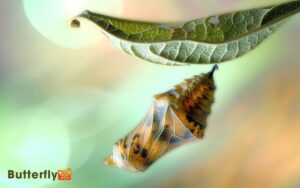


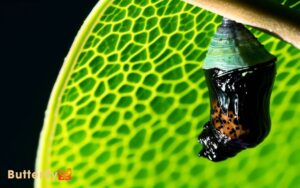
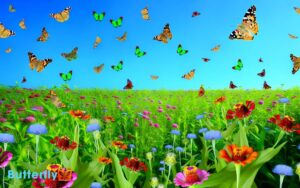
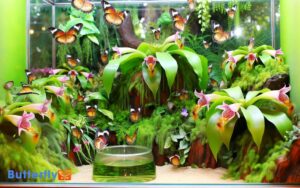
We know what a lot of the facet effect dangers are; it’s just a matter of how
badly you as an individual might be affected. Tren is confirmed to influence
ldl cholesterol negatively, and it’s just a matter
of how severe this could presumably be for you as a person. Research
have proven that Trenbolone could cause a lowering
of HDL (good) levels of cholesterol while raising LDL (bad) levels
of cholesterol. You won’t hear so much concerning the
cardiovascular unwanted facet effects of Trenbolone,
however they actually exist. What we principally mean by these unwanted facet effects is that they impression cholesterol and blood stress.
All steroids will trigger stress to the liver and kidneys
to some extent, and Trenbolone is not any exception.
Women who determine to use testosterone for efficiency are properly suggested to make use of Testosterone Propionate rather than testosterone enanthate.
Check prop is a faster-acting ester that may rapidly go away
the physique – so if side effects do seem, they will subside faster than with the slower-acting Testosterone Enanthate.
Deca durabolin is mostly one of many more healthy anabolic
steroids, because of its low androgenic properties. Just a fast reminder to inform you that, irrespective of how weak a steroid is, you need to at all times run submit cycle remedy
after a cycle, as all steroids affect your hormones.
It is taken into account superior to the original nandrolone compound by itself.
Tren’s main benefits are its slower metabolism, better attachment to the androgen receptor, and better prevention of fragrant compounds from forming.
The reputation of Tren tells us that people are thrilled to make use of it, and so they have been using it for a long time.
Once you’ve figured out its use, you probably can go a long
method to lowering the worst unwanted aspect effects for which Trenbolone
has a reputation.
Stanozolol can and will enhance bad cholesterol levels (LDL) and reduce good cholesterol (HDL) levels.
Low-dose medical research present a very clear negative impact on ldl
cholesterol with alarming changes to the LDL/HDL ratio[2].
So, we will only imagine what higher doses can do to our cholesterol levels.
While liver toxicity is a major concern with Winstrol, an even larger space
of concern could be associated to your cardiovascular health.
Extra specifically, what Winstrol can probably do to your levels of
cholesterol is not to be ignored.
Known for being a watery replacement for oral testosterone steroids, its effects are just like those of Check but barely totally different.
Now that you know that even the best oral anabolic steroids will come with their fair proportion of steroids, let’s look at the most secure
choices. Stacking Deca Durabolin with an androgenic steroid corresponding to Anadrol,
testosterone, or trenbolone can mitigate low NO levels. Our tests point out
that blood pressure will enhance at a rate that is corresponding to Anavar quite than harsher anabolic compounds.
Trenbolone has a stimulating effect on the central nervous
system, triggering thermogenesis and aiding fats burning.
However, such stimulation can contribute to opposed results,
together with insomnia, anxiety, restlessness, elevated sweating, and even paranoia in sensitive customers.
Nonetheless, it’s equally efficient when it comes to its ability to construct
muscle tissue.
We have found Anavar’s hepatic results to be less poisonous in comparison with different oral steroids, primarily based on our liver perform
check (LFT) results. Steve Theunissen is a seasoned fitness skilled with
25+ years of expertise. He has a quantity of certifications from
the International Sports Sciences Affiliation, together
with Licensed Personal Trainer, Health Vitamin Certification,
and Power and Conditioning Certification.
Losing weight and shedding excess body fat is troublesome however selecting the right steroid compound helps you to achieve fascinating objectives.
This lack of water retention makes Parabolan valued for slicing, fat loss, and contest preparation, the place a
hardened, dry, and vascular physique is desired. These with a low physique fat share will benefit most
from using Tren Hex as a slicing compound. You can anticipate a really exhausting and dry look
from a Parabolan cycle, even more so when used with different
compounds that excel at fat-burning with out fluid retention, with Winstrol being a typical
selection. This is important not just for well being causes but additionally to keep up the
gains you’ve made in the course of the cycle. Low testosterone will outcome in the lack of muscle and the gaining of fat, essentially destroying the exhausting work you set in during the cycle.
Possible unwanted facet effects embrace low libido and erectile dysfunction if not used with testosterone, excessive ldl cholesterol, pimples, head hair
loss, gynecomastia, and insomnia.
William Llewellyn (in his book) mentions that this
is as a end result of elevated stability of the 3-Keto group.
Thus, Oxymetholone one method or the other raises oestrogen in the physique
(quite rapidly) however we’re undecided why – there are a couple of theories
when you feel like looking round. Comparable to a bomb in its effects, it’s going to
deliver the user fullness and roundness very quickly at all.
Superdrol was offered legally as a Prohormone earlier than the
feds discovered it was certainly a Steroid. Curiously, Primobolan isn’t C-17 alpha-alkylated, regardless of present in oral type.
There is a huge demand for anabolic steroids proper now; however,
not everybody wants to break the legislation or endure the intense health penalties that include taking steroids.
So you won’t build a tonne of muscle and also you won’t drop your body fat by
50%, however what you’ll do is construct a substantial quantity of muscle and burn a substantial quantity of fats.
When you’re doing both of these items on the similar time your physique composition goes
to enhance fairly dramatically.
When individuals say “his genetics for constructing muscle are insane”,
the explanation for this (most of the time) is as a end
result of that particular person has superior testosterone levels.
If you take Anavar at a really excessive dose it could cause liver toxicity.
Nonetheless, the good news is you don’t must take a high dose of
Anavar to get good results.
When it comes to Masteron, the enanthate ester has by no means been created as a
pharmaceutical human-grade steroid, so its origins are unclear.
Most doubtless, an underground lab or other black market manufacturer created and launched
the Enanthate ester of Masteron into the underground market
over 20 years in the past. Masteron has been around since the late Nineteen Fifties, developed as Drostanolone Propionate and
utilized primarily as a breast cancer therapy in females. The anti-estrogen effects of Masteron made it suitable for this objective as a
result of estrogen contributing to the growth of
those sorts of cancerous tumors. Anxiousness can worsen particularly when coping with body image points or efficiency pressure.
At this level, your positive aspects will always begin becoming tougher
to acquire in comparability with the primary cycle.
Scientific doses for TRT medical use will be at the lowest levels –
typically, as little as 100mg per week is prescribed.
Medical professionals determine on this and are individualized according
to every male patient’s needs. All of those benefits and results
are possible with Testosterone Cypionate,
however your specific dosage, workout, and food regimen routines
will considerably determine how powerful these effects might be.
Your age and genetics additionally influence how much testosterone do bodybuilders take; https://jbhnews.com/winstrol-stanozolol-effects-doses-and-risks/33401/, this (and any other) steroid will have an effect on you.